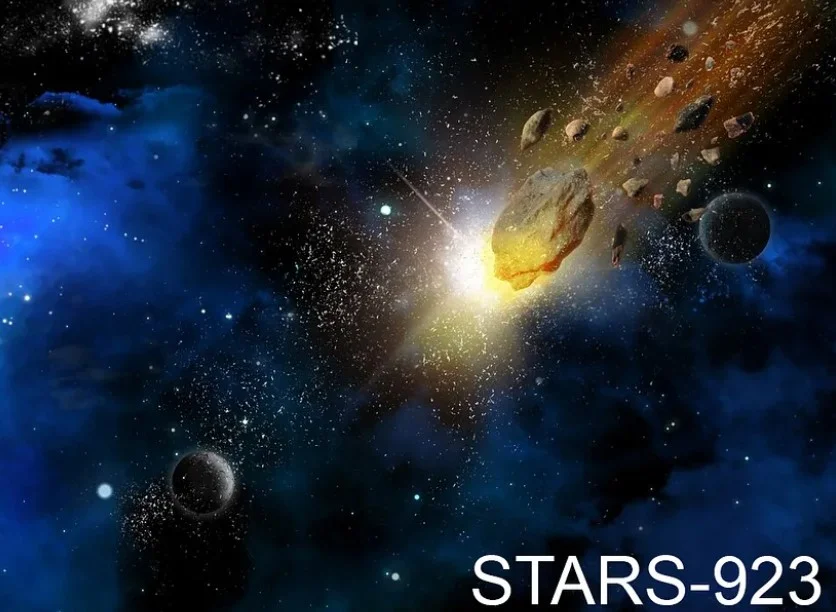Exploring the Wonders of Stars-923: Unveiling the Mysteries of a Celestial Marvel
The universe is a vast and mysterious place, filled with countless stars, planets, and other celestial bodies that have fascinated humanity for centuries. Among these countless wonders is Stars-923, a celestial object that has captured the imagination of astronomers and space enthusiasts alike. Stars-923 stands out not only because of its unique characteristics but also due to the mysteries it presents to scientists. This article will explore the wonders of Stars-923, diving into its discovery, its intriguing properties, and what makes it a significant object of study in the field of astronomy.
The Discovery of Stars-923: A New Celestial Beacon
Stars-923 was first identified by astronomers during a deep-sky survey aimed at cataloging distant celestial bodies in our galaxy. Located in a relatively unexplored region of the Milky Way, Stars-923 initially appeared as a faint and unremarkable point of light. However, as astronomers conducted more detailed observations, they noticed something unusual about this star.
Unlike other stars of similar brightness, Stars-923 exhibited irregular patterns in its light emissions. These fluctuations in brightness were unlike anything typically observed in stars of this kind, prompting further investigation. As telescopes and observational techniques improved, astronomers began to uncover more about this enigmatic star, realizing that it was more than just another point of light in the night sky.
The Unique Properties of Stars-923
Stars-923 quickly gained attention due to its unusual properties, which set it apart from other known stars. Understanding these characteristics is key to unraveling the mysteries that surround this celestial wonder.
Irregular Brightness Variations
One of the most intriguing aspects of Stars-923 is its irregular brightness variations. While most stars emit a relatively steady amount of light, Stars-923’s luminosity fluctuates in a seemingly unpredictable manner. These fluctuations could be the result of several factors, including interactions with nearby celestial objects, internal stellar processes, or even the presence of orbiting exoplanets that cause periodic dimming as they pass in front of the star.
These brightness variations make Stars-923 an exciting object of study, as they could provide valuable insights into the processes occurring within the star, as well as in its surrounding environment.
A Unique Spectral Signature
The light emitted by Stars-923 has been analyzed using spectroscopy, a technique that allows scientists to determine the composition of a star by examining the wavelengths of light it emits. The spectral signature of Stars-923 is unusual and suggests the presence of elements and compounds that are not commonly found in stars of similar type.
This unique spectral signature has led some astronomers to speculate that Stars-923 may be in a rare stage of stellar evolution, possibly transitioning into a red giant or shedding its outer layers in preparation for becoming a white dwarf. Alternatively, the star could be part of a binary system, where its unusual properties are the result of interactions with a closely orbiting companion star.
The Possibility of a Star System
Another possibility that has captured the attention of scientists is that Stars-923 may not be a single star, but rather part of a more complex star system. Observations suggest that there could be multiple celestial bodies in close proximity to Stars-923, possibly orbiting around a common center of mass.
If this hypothesis is correct, Stars-923 could provide a unique opportunity to study the dynamics of multi-star systems, which are relatively rare in our galaxy. Understanding how these systems form and evolve could offer new insights into the processes that shape the universe.
The Significance of Stars-923 in Astronomy
Stars-923 is more than just a curiosity; it holds significant potential for advancing our understanding of the cosmos. Here’s why this star is so important to the field of astronomy:
Insights into Stellar Evolution
Studying Stars-923 could provide crucial information about the life cycle of stars, particularly those in their later stages. By understanding the processes that cause its unusual brightness fluctuations and spectral properties, astronomers can gain a deeper understanding of how stars evolve, age, and eventually die. This knowledge is vital for piecing together the history of our galaxy and the broader universe.
Exploring Exoplanetary Systems
The possibility that Stars-923’s brightness variations are caused by orbiting exoplanets makes it an exciting target for exoplanet research. Discovering planets around Stars-923 could offer new perspectives on planetary formation and the diversity of planetary systems in our galaxy. It could also provide opportunities to study the atmospheres of these exoplanets and assess their potential habitability.
Advancing Astronomical Techniques
The challenges posed by observing and understanding Stars-923 are driving advancements in astronomical techniques and technology. The need to capture more detailed and accurate data has led to the development of more sensitive instruments and sophisticated data analysis methods. These innovations will not only help unravel the mysteries of Stars-923 but also enhance our ability to study other distant and complex celestial phenomena.
Conclusion
Stars-923 is a celestial marvel that continues to intrigue and challenge astronomers. Its unique properties, including irregular brightness variations and a distinctive spectral signature, make it a key object of study in the field of astronomy. As research on Stars-923 continues, it may reveal new insights into stellar evolution, exoplanetary systems, and the dynamics of multi-star systems. Ultimately, exploring the wonders of Stars-923 will contribute to our broader understanding of the universe and its many mysteries.














Post Comment